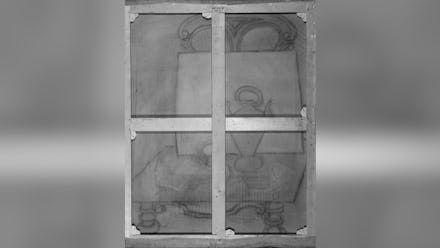Still Life, a painting from Pablo Picasso's Cubist period, has had a secret lurking beneath its layers of paint for nearly 100 years. A team of experts at the Art Institute of Chicago, where the painting hangs, were curious to learn more about Picasso’s process, noting that he appeared to use a complex layering technique as he painted. Still Life seemed to be an ideal subject, as the art experts identified apparent wrinkles on the canvas. To take a closer look, they used X-ray and infrared imaging to see beyond the visible layers. What they found was a Picasso within a Picasso — a hidden drawing behind the painting itself, as described in the journal SN Applied Sciences. The sketch showed a pitcher, a mug, and a rectangular object that the researchers suggested might be a newspaper, all sitting atop a flat surface, perhaps a table or the seat of a chair.
Prior research has shown that it was common for Picasso to paint over previous works. In 2014, researchers found a portrait of an unidentified man hidden behind his painting of a bathing woman in The Blue Room. Similarly, an analysis of his paintings La Miséreuse Accroupie (otherwise known as The Crouching Beggar) revealed that he painted over landscapes created by another artist. Picasso would often do this so he could incorporate elements of those previous works into his painting. In the case of The Crouching Beggar, he flipped the landscape and used the top of a mountain cliff as the line of the woman's back in his own painting. But his process to hide the sketch behind Still Life was more thorough, and it doesn't appear that he incorporated it into the final piece at all. Researchers found that he covered the drawing entirely by painting over it with a thick layer of white paint. Once it was obscured entirely, he used the canvas to create his famous abstract piece.
While the researchers didn't speculate as to why Picasso covered up his drawing before painting, they did note that they felt confident that the work was Picasso's. According to the researchers, the drawing was similar to previous work done by the artist, including some pieces that currently hang in the Gothenburg Museum of Art in Sweden.
In addition to the secret drawing hidden beneath the layers of paint, the x-ray and infrared imaging process revealed additional details about the painting, including previous efforts to conserve and restore it. It showed that acrylic resin and paint had been used on the surface of the canvas to try to preserve parts of the painting. Researchers were able to remove these restoration attempts and use modern conservation techniques to reveal the painting's original colors, which were hidden by the resin.
